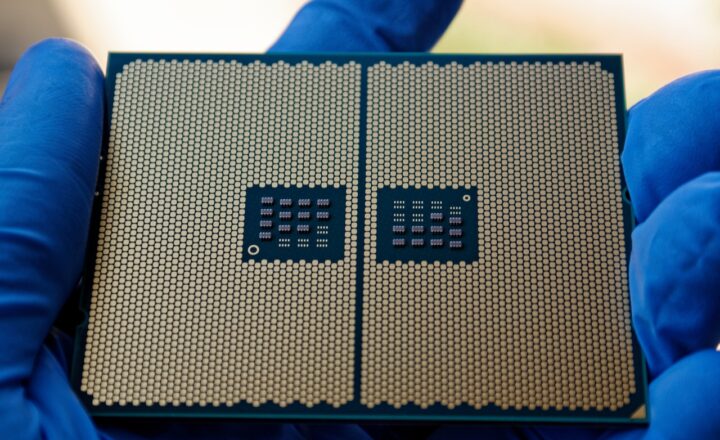The Race for Faster Processors: How Intel and AMD Are Competing in 2024
November 12, 2024

In the fast-paced world of technology, processors serve as the heart and brain of devices ranging from personal computers to gaming consoles. As we step into 2024, the competition between two giants, Intel and AMD, has intensified to unprecedented levels, with both companies racing to develop faster, more efficient chips. This article explores the key innovations, strategies, and market dynamics that define this fierce rivalry.
1. The Historical Context of Intel and AMD’s Competition
Intel and AMD have been at the forefront of processor technology for decades. Intel, founded in 1968, has long been the dominant player in this market, known for its cutting-edge technology and high-performance processors. AMD, established in 1969, has traditionally played the role of a challenger. However, the tide began to shift in the last few years with the introduction of AMD’s Ryzen series, which offered excellent performance at competitive prices.
The rivalry has not only produced faster processors but also led to advancements in manufacturing processes, energy efficiency, and integrated graphics capabilities. The stakes are high as both companies aim to capture the hearts of gamers, content creators, and professionals alike.
2. Innovations in Processor Technology: What’s New in 2024?
The year 2024 marks a significant milestone in terms of technological advancements in processor architecture. Here are some of the key innovations that both Intel and AMD are introducing this year:
- Intel’s Meteor Lake Architecture: Intel’s upcoming Meteor Lake processors are expected to utilize chiplet designs, breaking away from traditional monolithic dies. This architecture allows for enhanced modularity and flexibility, fostering better performance through dedicated processors for specific tasks. The integrated graphics performance is particularly anticipated to include improvements for gaming and graphics-intensive applications.
- AMD’s Zen 5 Architecture: On the other side, AMD’s Zen 5 processors promise substantial boosts in performance. With enhanced IPC (instructions per clock) and energy efficiency, these chips are designed to not only match Intel’s offerings but exceed them in multi-threaded tasks. Furthermore, AMD’s improved 3D V-Cache technology delivers superior gaming performance by increasing cache density without significant space requirements.
- Advanced Manufacturing Processes: Both companies are pushing towards a 3nm manufacturing process, reducing the size of individual transistors. This shrinkage translates into lower power consumption and improved performance. Intel has been investing in its fabrication capabilities, while AMD collaborates with TSMC for advanced process nodes, leading to a competitive edge in power-efficient designs.
- Artificial Intelligence Integration: As the demand for AI capabilities grows, both Intel and AMD are embedding machine learning functionalities within their processors. This integration is aimed at enhancing computational tasks, providing faster image processing for AI-driven applications, and improving overall system responsiveness.
Each of these innovations signifies a strategic response to customer demands for performance and efficiency in the ever-evolving tech landscape.
3. Market Strategies: Pricing and Positioning
As the competition heats up, pricing strategies play a crucial role in market positioning. Here’s how Intel and AMD are maneuvering:
- Intel’s Rebranding Efforts: To regain market share, Intel is focusing on rebranding its offerings, emphasizing the integration of AI capabilities and enhanced gaming performance. This marketing push highlights not just speed, but overall user experience improvements.
- AMD’s Price-to-Performance Ratio: AMD continues to capitalize on its reputation for delivering high performance at lower prices compared to Intel. This approach is particularly compelling for budget-conscious gamers and professionals, fueling the movement from Intel to AMD in recent years.
- Partnerships and Ecosystem Development: Both companies are forming strategic alliances with hardware manufacturers and software developers to create an ecosystem that benefits users. Intel, for instance, focuses on partnerships that enhance its graphics capabilities through hybrid computing, while AMD invests in collaborations aimed at optimizing performance across popular gaming titles.
The strategies employed by both companies reflect their aim to cater to diverse consumer groups while maintaining technological superiority.
4. The Gaming Perspective: Impact on Gamers and Creators
For gamers and content creators, the choice between Intel and AMD can heavily influence performance. In 2024, several factors come into play:
- Performance Benchmarks: Early benchmarks suggest that both companies’ latest offerings lead to improved frame rates and resolution capabilities. AMD’s emphasis on gaming performance, particularly with its Zen 5 architecture, positions it favorably. However, Intel’s focus on integrated graphics may provide an edge for users who prioritize sleek, single-board setups.
- Thermals and Overclocking Potential: Enthusiasts often seek processors with good thermal regulation and the potential for overclocking. Reports indicate that AMD’s architecture provides more headroom in this area than Intel’s, making it a go-to for many overclocking aficionados.
- Software Optimization: Both companies work closely with software developers to ensure their processors are fine-tuned for popular games and productivity applications. The extent of optimization can drastically affect real-world performance, making it an important consideration for users choosing between the two.
As technology evolves, gamers and creators must continually evaluate which brand’s offerings align with their performance expectations and budgets.
5. The Future Landscape: Predictions for 2025 and Beyond
Looking ahead, the competition between Intel and AMD will undoubtedly drive further innovations. Predictions for 2025 and beyond include:
- Adoption of 3D Chip Stacking Technology: The pursuit of greater efficiency and performance may see both companies adopting more advanced manufacturing techniques, like 3D chip stacking, which could enhance processing power without increasing footprint.
- Emergence of Quantum Computing Integration: While still burgeoning, both Intel and AMD may make strides in integrating quantum computing principles into conventional processing, further blurring the lines between traditional and next-gen computing technologies.
- Enhanced Focus on Sustainability: As environmental concerns rise, both companies will likely commit to creating energy-efficient processors with a lower carbon footprint, catering to a more eco-conscious consumer base.
The race between Intel and AMD is poised to shape the technological landscape significantly, setting new benchmarks in speed, efficiency, and sustainability.
Conclusion
The competition between Intel and AMD is more than just a clash of market leaders; it represents the drive for innovation and consumer-centric advancements. In 2024, with rapid developments in processor technology, both companies are redefining the future of computing. As they continue to push the envelope, choices made by consumers will influence the direction of technology and capabilities in the long term. Ultimately, recognizing the critical factors in this race can empower users to make informed decisions that best meet their needs in an ever-evolving digital landscape.








